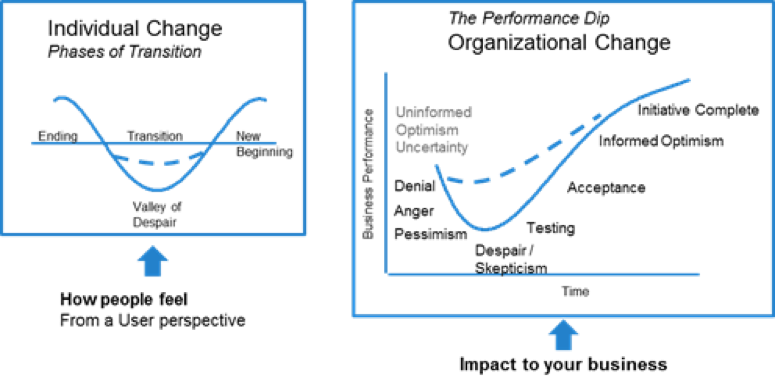Guest post by Monica S. West, Senior Director, Project Management Office, Xerox Managed Document Services, Global Delivery
Improvement cannot happen without change; it’s inevitable. Change can be a huge barrier, but it doesn’t have to be scary, stressful, anxiety-ridden or resisted. By implementing and following a consistent change management methodology, it will benefit your company, your end users, and your bottom line.
Why do 75 percent of IT executives believe their projects are “doomed from the start”? (source: Geneca). Key causals relate to lack of clear requirements, senior level buy in, and what I call a strong marketing campaign that constantly aligns priorities and awareness of project deliverables and relevancy to the business situation.
3 of 4 Projects Will Fail

Project Management Institute (PMI) research shows that only 26 percent of projects succeed. Think about that number. Only 26 percent of projects succeed? This translates to 3 out of 4 projects will fail if not properly managed from the start, which is the most critical time in a project. In my 19 years of project management experience, the key to any successful project lies with clear, frequent and multi-channel communications.
What has stuck with me the most about my involvement in helping develop a change management methodology for large MPS outsourcing solutions is a state within the three phases of change, called “the valley of despair” and where most people fall into initially.
Try Change Management “Marketing”
If you have heard that it takes 21 days for a new habit to stick, I tend to think of this “despair” state in a similar way. People do not like change, no matter what it is. Resistance quickly turns into anger.
The key to avoiding this is to have a strong communication process, and why I like the term “marketing campaign.” It’s all about managing the resistance and discomfort of change by using techniques that have proven successful over many years and a wide variety of projects in size, complexity and diversity. What I’ve seen happen frequently is the tendency to create communications that only focus on tactical improvements and ignore the human side, the psychological aspect.
Here are what I have found as key areas and success factors:
- Clear project scope and requirements. In laymen’s terms, address the “what” at a high level, as well as the “why.”
- Active project evangelists. The project sponsor/owner, the project manager, and the project team should be willing to help promote the benefits and invest time into managing change.
- Keep it simple. Explain why things have to change (improve) and address behaviors and awareness using these three phases:
- Create a vision – Build excitement (why the ending of current state)
- Implement – High communication levels (transitioning to something better)
- Turn initiative into best practice (new beginning)
The Phases of Change
Employee Acceptance Is Top Priority
Adopt these 6 best practices to improve employee adoption of change:
- Set clear expectations throughout
- Understand risks and how to mitigate them
- Strive for maximum end-user satisfaction
- Accelerate end-user adoption
- Expedite targeted savings (communicate the goals and expectations)
- Develop effective strategies around:
- Communications
- Stakeholder maps
- Governance
- Escalation
Gaining user acceptance for new processes or technologies should be your top priority in any new project. With a proactive mindset regarding all phases of change management and accepting that change management will take effort by everyone, you dramatically increase the chance of success and accelerate adoption of the improvements your organization needs to help your bottom line.



